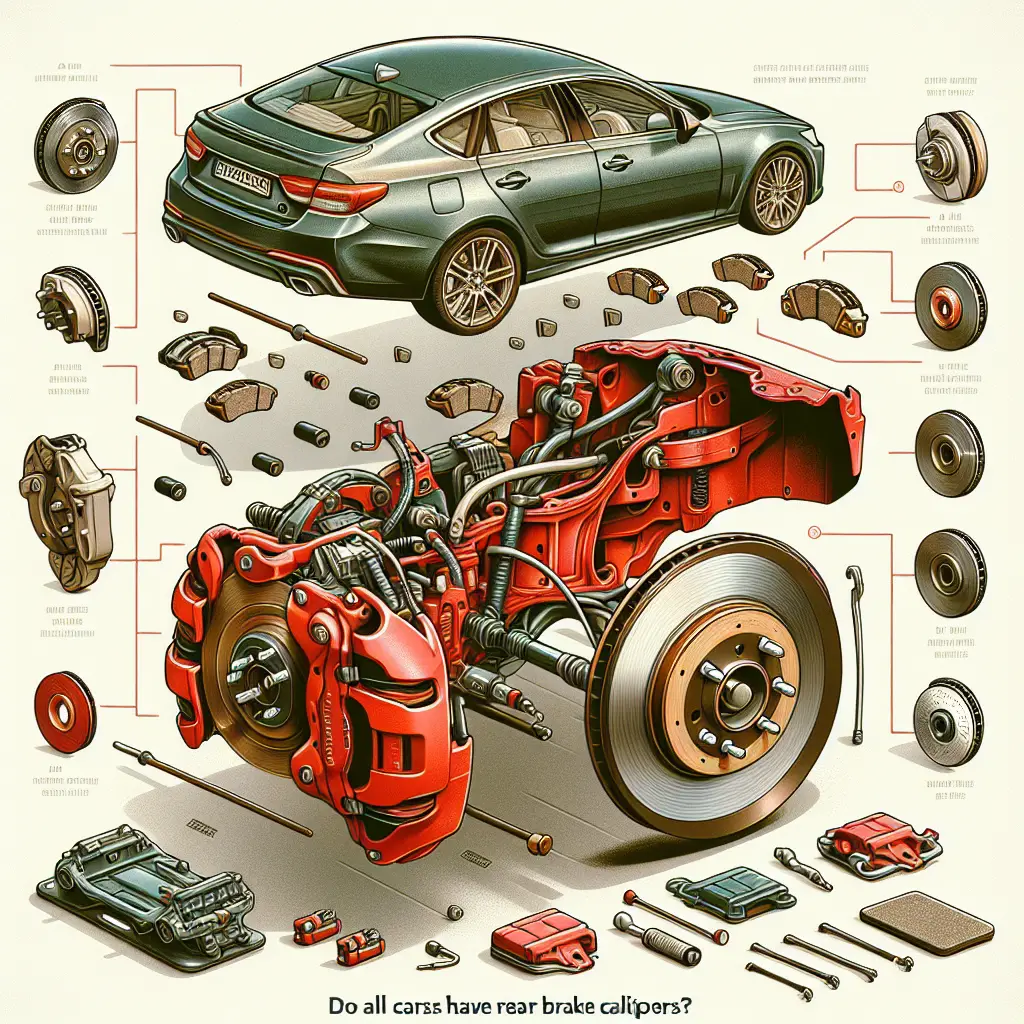Do All Cars Have Rear Brake Calipers?
In our quest for efficiency and safety, modern vehicles come equipped with a variety of braking systems. As drivers and car enthusiasts, understanding the ins and outs of these systems can be crucial for maintenance and safety. Specifically, one aspect that often raises questions is whether all cars have rear brake calipers. In this blog post, we’ll dive into the world of automotive brakes, scrutinizing the configuration of different braking systems and the role of rear brake calipers.
Understanding Braking Systems
To kick things off, let’s lay down some fundamentals about braking systems. In essence, the braking system is a car’s most important safety feature. According to a study by the National Highway Traffic Safety Administration, brake-related problems account for a significant percentage of car accidents where a vehicle defect is cited as a contributing factor.
The braking system typically comprises several key components: the brake pedal, master cylinder, brake lines, brake pads, and yes, the brake calipers. When you press the brake pedal, hydraulic fluid is pushed through the brake lines into the calipers, which in turn, press the brake pads against the spinning rotors to slow down or stop the vehicle.
Front Brakes vs. Rear Brakes
Most consumer vehicles on the market feature a front-to-rear brake bias. This means the front brakes are responsible for the majority of the braking force. Why is this the case? The laws of physics dictate that during braking, a car’s weight shifts forward, placing more strain on the front wheels. Consequently, manufacturers typically equip cars with larger brake components upfront to handle this load.
Now, let’s address our main topic: Do all cars have rear brake calipers? The straightforward answer is that it depends on the type of braking system the car has.
Rear Brake Calipers: A Closer Look
Cars generally come with two types of braking systems: disc brakes and drum brakes. Let’s take a closer glance at each.
Disc Brakes:
Disc brakes are the most common type found in modern cars, especially on the front wheels. This system utilises brake rotors and calipers. Disc brakes are known for their superior stopping power and heat dissipation, which is why they are favored for the front wheels. But what about the rear wheels?
Many cars also have disc brakes on the rear wheels, and thus, they have rear calipers. Examples include sports cars, luxury vehicles, and modern sedans and SUVs, where the improved braking performance of rear disc brakes is desirable for the vehicle dynamics or the weight of the vehicle.
Drum Brakes:
On the other hand, older cars and some entry-level modern vehicles might feature drum brakes on the rear wheels. Instead of calipers, these systems have brake shoes that press outwards against a spinning drum to create friction and slow the vehicle down. In this case, there are no rear brake calipers because the braking mechanism is entirely different.
Upgrades and Aftermarket Modifications
It’s also worth noting that rear drum brakes can be converted to disc brakes, and many car enthusiasts and safety-conscious drivers opt for this upgrade. The conversion can lead to better brake performance and improve the car’s handling during deceleration.
A study commissioned by the National Institute for Automotive Service Excellence (ASE) underscores the significant role that proper maintenance and upgrades can play in a vehicle’s braking performance and overall safety.
Safety Considerations
No matter the brake system setup, rear brakes play a crucial role in vehicle stability and stopping power. A balanced braking force distribution between front and rear is essential to avoid hazardous situations like brake fade or loss of control, especially in critical scenarios or during heavy braking.
The Insurance Institute for Highway Safety (IIHS) regularly conducts tests and provides ratings that reflect the effectiveness of a vehicle’s braking system among other safety features. This can be a valuable resource for car buyers and enthusiasts looking to understand the performance of rear brake components.
Conclusion
To circle back to our initial query: Not all cars come with rear brake calipers. While most modern cars are equipped with disc brakes and thus have calipers on all four wheels, certain models, particularly those designed with cost-saving measures in mind, may have drum brakes at the rear.
Car owners should be aware of the kind of braking system their vehicle has to ensure proper maintenance. For instance, changing the brake fluid is a regular maintenance task that’s critical for the proper functioning of brake calipers, irrespective of whether they are located at the front or the rear.
When it comes to rear brake calipers, those with a passion for automotive care or performance might consider an upgrade to disc brakes if their vehicle doesn’t already have them. Not only does it potentially enhance the car’s stopping prowess, but it may also contribute to a safer and more pleasurable driving experience.
If you’re in doubt about your car’s braking system or if you’re contemplating an upgrade, always consult with a licensed mechanic or brake specialist to get professional guidance tailored to your specific vehicle and driving needs.
With that said, we’ve braked to a stop on the topic of rear brake calipers. Remember to maintain your vehicle’s braking system regularly and drive safely. The road is an unpredictable place, but understanding the stopping power at your command can make all the difference.

